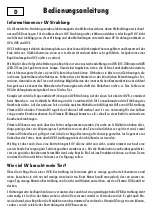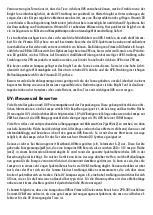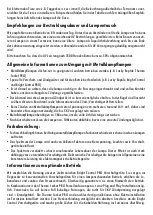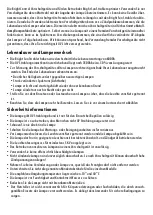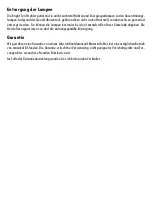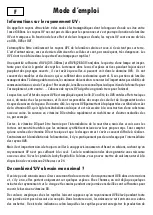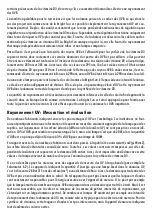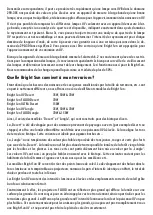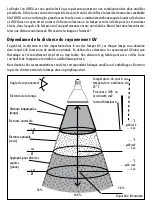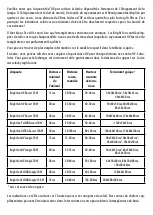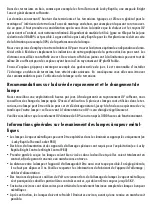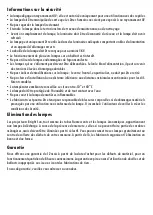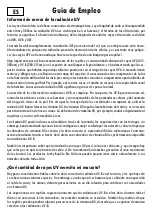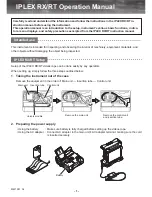
Manual
GB
Information about UV:
Electromagnetic waves in the wavelength between 1 nm and 380 nm are referred to as ultraviolet radiation.
For humans UV radiation is invisible and therefore referring to it as UV light is slightly misleading. Depen-
ding on its effects and the wavelengths the UV radiation is split into UVA, UVB and UVC.
UVC radiation is completely filter from natural sunlight in the atmosphere and does not reach us down on
earth. This is good, as UVC is dangerous as it harms and destroys cells. UVC must not be contained in the
spectrum of a reptile lamp!
For the successful husbandry of reptiles a sufficient amount of UVA (315-380 nm) and UVB (280-315 nm) is
important in the spectrum of a lamp. Especially from day-active species which inhabit open landscapes it
is known that they can see UVA radiation. Often they have patterns that reflect only in the UVA part of the
spectrum. If this radiation is missing from terrarium lighting animals lose the possibility for important
parts of the inner species communication! It can happen that without UVA a male cannot discover when a
female is ready for mating. The lack of UVA radiation causes a lot of stress for the animal.
The effects of UVB radiation are a bit more complicated. On one side UVB has dangerous effects for humans
and causes sunburn and skin cancer. On the other side most vertebrate animals can form their own vitamin
D3 with the help of UVB radiation. Vitamin D3 regulates the calcium metabolism and is important for healthy
bones. The lack of vitamin D3 can quickly cause rachitis and other metabolic bone diseases.
Vitamin D3 can also be supplemented over the food. However, research with tortoises has shown that vita-
min D3 which is synthesized in the body with the help of UV is producing better results. It also is important
to know that vitamin D3 is toxic if overdosed and the correct dosage can be tricky when supplementing over
the food. Through providing UVB radiation and allowing the animal to form its own vitamin D3, overdosing
is hardly possible.
Please consider that UVB radiation on its own cannot guarantee healthy bones as the supply of calcium has
to be ensured. Calcium has to be provided over the food, e.g. with Lucky Reptile Bio Calcium products which
can ensure the availability of calcium all the time.
How much UV does my animal need?
Little is known of the correct dosage of UVB radiation inside a terrarium and all there is, is based on a
few individual species. However, from humans we know that on a sunny day a few minutes outside will be
sufficient to cover our Vitamin D3 needs, and that fully clothed with only hands and face able to absorb UVB!
Practical experience with reptiles indicates that a daily, highly concentrated UVB radiation is not necessary
either. In nature animals seek out hideouts during the day to avoid the strongest sun periods. There are
also indications that reptiles can register the production of certain preliminary stages of vitamin D3 and
selectively expose themselves to UVB.
A must in the terrarium is that animals can get away from the UVB which is easily possible with the Bright
Sun as these punctiform lamps only have local UV radiation. There is also research that shows that the
body does have regulating mechanisms to prevent overproduction of the toxic vitamin D3. However, the
regulation is only functioning properly with a very natural UV spectrum. For converting pre-vitamin into


